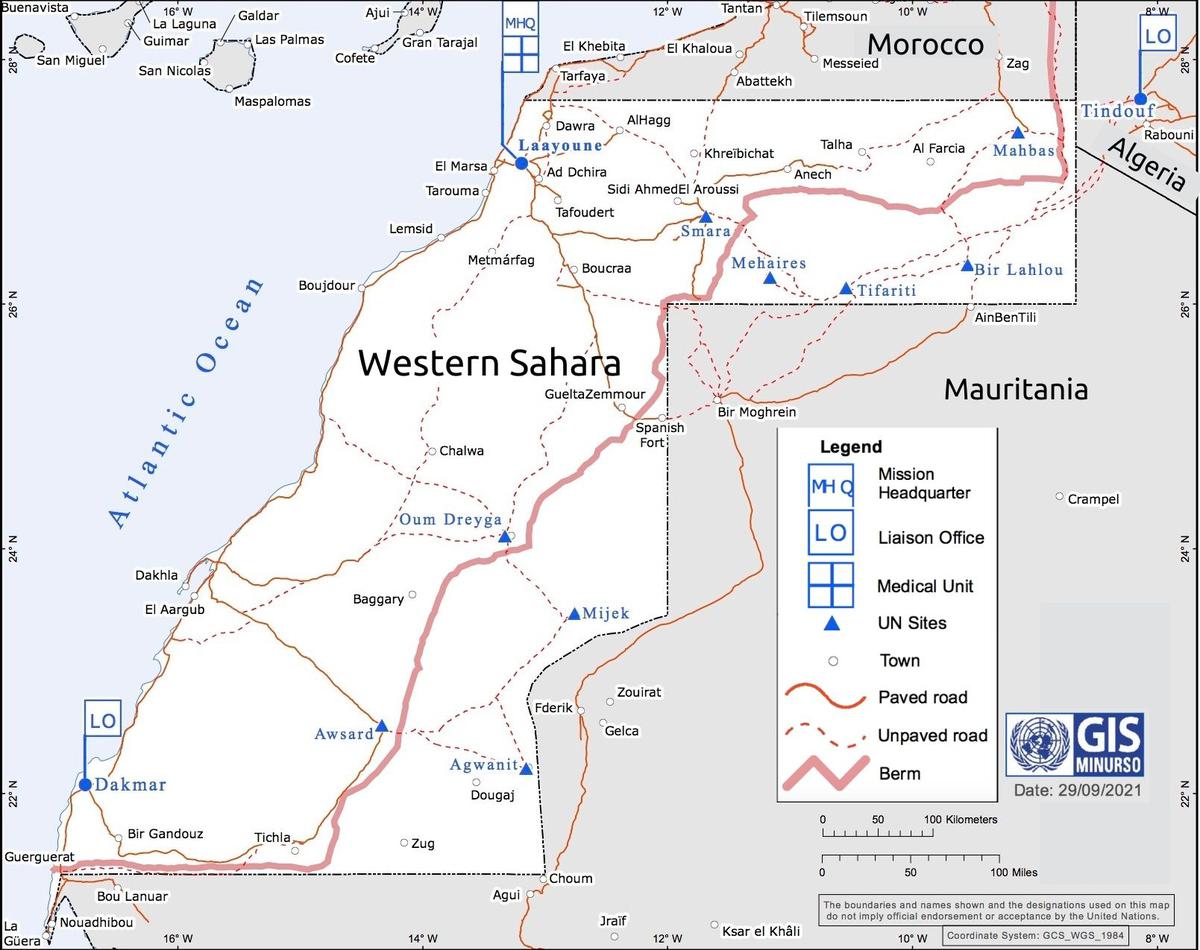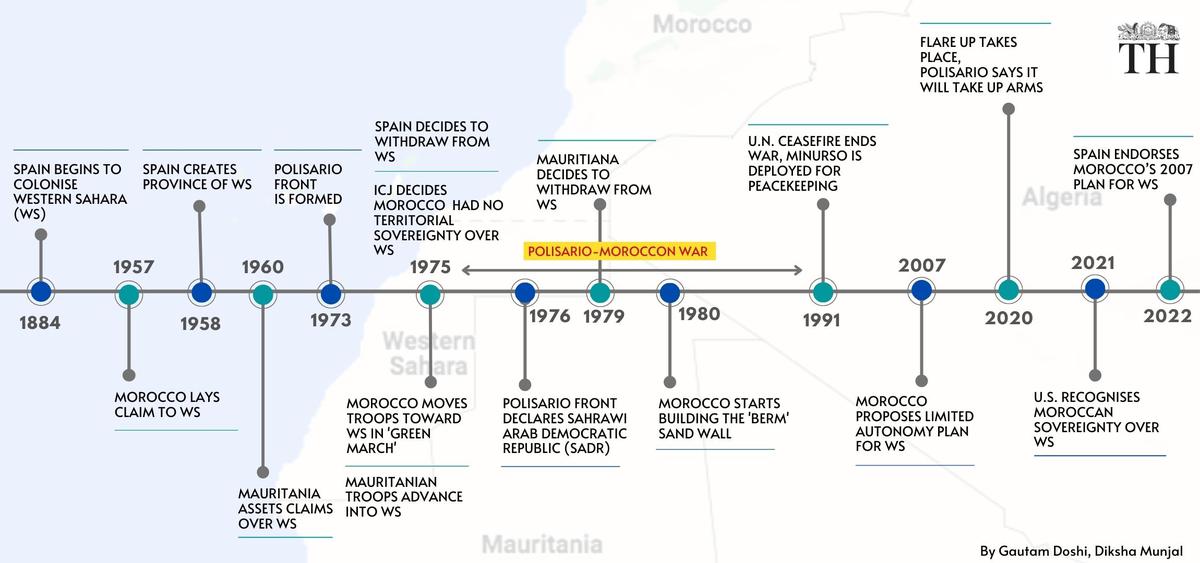The Western Sahara dispute
Context
-
Recently, the Algerian President announced that Algeria would “immediately” suspend its 20-year-old treaty of “friendship, good neighbourliness, and co-operation” with Spain. Since 2002, this treaty has led to a close partnership between the two countries on migration flows, anti-human trafficking measures, as well as in the economic, financial, educational, and defence sectors.
Key Details
- Algeria will also be banning imports from Spain. This is being seen as an intensification of Algeria’s anger over Spain’s recent foreign policy shift on the disputed Western Sahara region.
- Spain endorsed a plan by Morocco which would give limited autonomy to Western Sahara, but still keep it under Moroccan rule. Morocco has controlled the majority of this disputed territory for decades. Before the recent shift, Spain had supported the United Nation’s mandate to hold a referendum in Western Sahara to allow self-determination.
What is the Western Sahara region?
- Western Sahara is a vast, sparsely-populated desert region in Northwest Africa, stretching across 2.5 lakh sq km.
- It is bordered by Morocco in the North, Algeria in a small northeastern patch, and Mauritania in the East and South.
- It also has a long coast with the Atlantic Ocean in the West and Northwest. It is a region rich in phosphates and other minerals and has a lucrative fishing industry on its Atlantic coast.
- With a population of a little under six lakh, this former Spanish colony is home to the nomadic indigenous Sahrawi tribe whose main language is Hassaniya Arabic. For decades,
- Morocco has claimed control over Western Sahara while the ethnic Sahrawi fight for their right to self-determination.

When and how did the dispute begin?

What happened after the 1991 ceasefire?
- The referendum for Sahrawi self-determination in Western Sahara has not taken place yet, stalled by issues like determining who is eligible to vote.
- The SADR is operating largely from the eastern flank of Western Sahara and refugee camps in the Tindouf region of Algeria.
- Moroccan troops have built a huge sand wall called the ‘Berm’ (the construction of which started in 1981), from the Atlantic coast of Western Sahara to the mountains of Morocco, dividing the territories they control from that of the Polisario Front.
- The Berm is a buffer zone lined with land mines.
United Nations Mission for the Referendum in Western Sahara (MINURSO)
- In 1991, the UN-mandated ceasefire also resulted in the deployment of a UN peacekeeping mission in Western Sahara to monitor the ceasefire. It was also initially tasked with holding the referendum in the region and was hence named the United Nations Mission for the Referendum in Western Sahara (MINURSO). With consecutive extensions of its mandate over the years, MINURSO troops are still deployed in the region.
Reference:
Visit Abhiyan PEDIA (One of the Most Followed / Recommended) for UPSC Revisions: Click Here
IAS Abhiyan is now on Telegram: Click on the Below link to Join our Channels to stay Updated
IAS Abhiyan Official: Click Here to Join
For UPSC Mains Value Edition (Facts, Quotes, Best Practices, Case Studies): Click Here to Join
